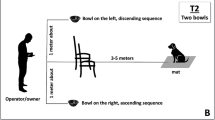Abstract
This paper presents a method of tone recognition for Mandarin speech by using combination of wavelet transform and hidden Markov modeling techniques. A pitch detector based on singularity detection and multi-resolution analysis of wavelet transform is employed for estimation of pitch periods, and hidden Markov modeling with partition Gaussian mixtures probability density function is used for the tone recognition. The algorithm can provide recognition accuracy of 97.22% and 94.47% for speaker-dependent and speaker-independent tone recognition, respectively.
Similar content being viewed by others
References
L. R. Rabiner, R. W. Shielf, Digital Processing of Speech Signals, 1978, Section 7.3.
W. Yang, J. Lee, Y. Chang, H. Wang, Hidden Markov model for Mandarin lexical tone recognition, IEEE Trans. on ASSP, ASSP-36(1988)7, 988–992.
S. Mallat, S. Zhong, Characterization of signals from multiscale edges, IEEE Trans. on PAMI, PAMI-14(1992)7, 710–732.
J. Cheng, P. Zhang, S. R. Dai, K. C. Yi, Singularity detection of signals with wavelet transform, Chinese Journal of Communications, 16(1995)3, 96–104, (in Chinese).
S. Kadambe, G. F. Boudreaux-Bartels, Application of the wavelet transform for pitch detection of speech signals, IEEE Trans. on IT, IT-38(1992)2, 917–924.
J. Cheng, P. Zhang, S. R. Dai, Z. Hu, An event based pitch detector using fast wavelet transform. In ed. B. Z. Yuan, Proc. of Int. Conf. on Signal Processing(vol.1), Beijing: International Academic Publishers, 1993, 683–686.
B. H. Juang, L. R. Rabiner, Mixture autoregressive hidden Markov models for speech signals. IEEE Trans. on ASSP, ASSP-33(1985)6, 1404–1413.
Y. Lee, L. Lee, Continuous hidden Markov models integrating transitional and instantaneous features for Mandarin syllable recognition. Computer Speech and Language, 7(1993), 247–263.
Hu Zheng, Yang Yuwei, The Principle and Application of Vector Quantization, Xi’an: Xidian University Press, 1988, Chapter 2, (in Chinese).
Author information
Authors and Affiliations
Additional information
Supported by the National Natural Science Foundation of China
About this article
Cite this article
Cheng, J., Yi, K. & Li, B. Mandarin tone recognition based on wavelet transform and hidden Markov modeling. J. of Electron.(China) 17, 1–8 (2000). https://doi.org/10.1007/s11767-000-0015-y
Issue Date:
DOI: https://doi.org/10.1007/s11767-000-0015-y




